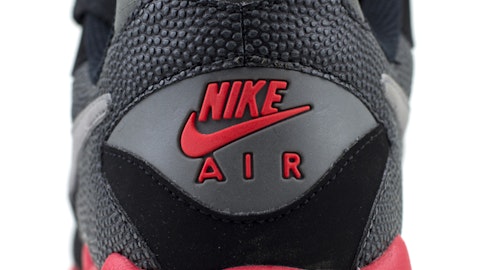Billionaire David Einhorn is one of the most-followed Wall Street activist investors and the founder of Greenlight Capital. Greenlight under Einhorn’s leadership managed to generate annualized returns of 16.5% since inception in May 1996. This year, Einhorn will be one of the speakers at the 2016 Ira Sohn Conference. Einhorn often appears at the event, which is one of the most anticipated in the investment community and he usually presents some of his best short ideas. Last year, Einhorn talked about fracking and pitched a short on Pioneer Natural Resources (NYSE:PXD), whose stock slid by 15% since the presentation. ST. Joe Co (NYSE:JOE), another Einhorn’s short idea presented at the last year’s Ira Sohn is down by around 3%. On the other hand, athenahealth, Inc (NASDAQ:ATHN), a stock that Einhorn had been pitching as a short for a couple of years, having said at one point that it could fall by as much as 80%, has been surging. With this in mind, let’s take a closer look at Einhorn’s recent performance as well as some of his short and long picks to give you a better idea about his upcoming presentation at the Ira Sohn Conference on May 4. As a sidenote, we have also prepared a short presentation about the 2016 Ira Sohn Conference and included a list of speakers that you can find here.
Even though Greenlight had a strong performance over the years, in 2015 the fund lost over 20% net of fees and expenses. In its fourth-quarter letter to investors, Greenlight highlighted the main reasons behind the losses, which included long positions in Micron Technology, Inc. (NASDAQ:MU) and CONSOL Energy Inc. (NYSE:CNX) and short bets against two stocks that ranked among the best-performing in the S&P 500: Netflix, Inc. (NASDAQ:NFLX) and Amazon.com, Inc. (NASDAQ:AMZN). Sunedison Inc (NYSE:SUNE) was another top pick in Greenlight’s portfolio that tanked last year and dramatically affected its returns.
“[…] our worst performing investments were among our biggest positions. These aren’t our first big losses nor are they likely to be our last, and while our goal is to minimize them, they come with the territory of running a concentrated portfolio. In 20 years we’ve had 21 instances of a position costing us more than 3% of capital in a calendar year. Other than the awful bear market of 2008, when we had five losers of this magnitude, we’d have to go back to 2002 to find a year when we had as many as two. Most years we’ve had none or one.
This year we had three (CNX, MU and SUNE). Nothing distinguishes these from our other large losers in prior years. What’s unusual is that they all happened at around the same time. Having three in a single year is both unfortunate and too many for us to be able to succeed,” Greenlight said in its fourth-quarter letter to investors.”
We have analyzed Greenlight’s 13F portfolio at the beginning of this year and our calculations, that took into account the weighted average returns of the fund’s positions in companies worth over $1.0 billion, showed that the fund’s 13F portfolio gained 3.9% during the first quarter. One of the highlights of the quarter, was the fund’s stake in Consol Energy, which surged by 43% during the first three months of the year. According to its third-quarter letter, Greenlight expected Consol to start generating cash this year and it considered the stock to be undervalued since the market failed to overlook the company’s initiatives in reducing costs and its proved natural gas reserves.
“Even at lower commodity prices, capital discipline, cost cutting and much more efficient drilling economics should enable CNX to be cash flow breakeven or better from here on out, which is a significant improvement from our original expectations of about $1 billion of cash burn through 2017. In 2016 we expect CNX to generate cash while growing its production and proved developed reserves. There are very few midsize energy companies achieving similar success. And yet, CNX trades as if it is at the cusp of financial distress. Of course, we wish we were entering the position now rather than at the higher prices we paid,” the fund back in October 2015.
This year, Einhorn might take a different approach and either pitch Consol Energy as a long idea to put the stock in the spotlight, or he might talk about Sunedison, also a long idea that has been costing Greenlight a lot of money. At the beginning of 2015, Sunedison ranked as one of Greenlight’s largest holdings, but as the stock slid by over 74%, the position ranked on the 21st spot at the end of the last year (the fund also reduced the stake by some 25% in the third quarter). Sunedison is currently trading close to its 52-week low and is considerably down from the low $30s it was hovering around nine months ago. In January, Greenlight got to appoint a representative on Sunedison’s board and said that it had engaged with representatives of Sunedison’s board and discussed the company’s performance, as it revealed in a filing with the SEC. The filing also stated that Greenlight had proposed the amendment of Sunedison’s bylaws to prevent the company from issuing equity without a supermajority vote of the Board. According to the filing, Sunedison held some 27.15 million shares of Sunedison, including warrants and convertible senior notes.
Some of Greenlight’s short picks include the aforementioned athenahealth, Inc (NASDAQ:ATHN) and Pioneer Natural Resources (NYSE:PXD), as well as Keurig Green Mountain Inc (NASDAQ:GMCR) and Mallinckrodt PLC (NYSE:MNK), which the fund mentioned in one of its investor letters.
At the beginning of 2016, Greenlight’s largest position was represented by Apple Inc. (NASDAQ:AAPL), in which the fund held 6.28 million shares, the position amassing 12% of its equity portfolio. It is followed by General Motors Company (NYSE:GM) and Time Warner Inc (NYSE:TWX), in which Greenlight reported ownership of 13.92 million shares and 6.44 million shares, respectively.
Disclosure: none





